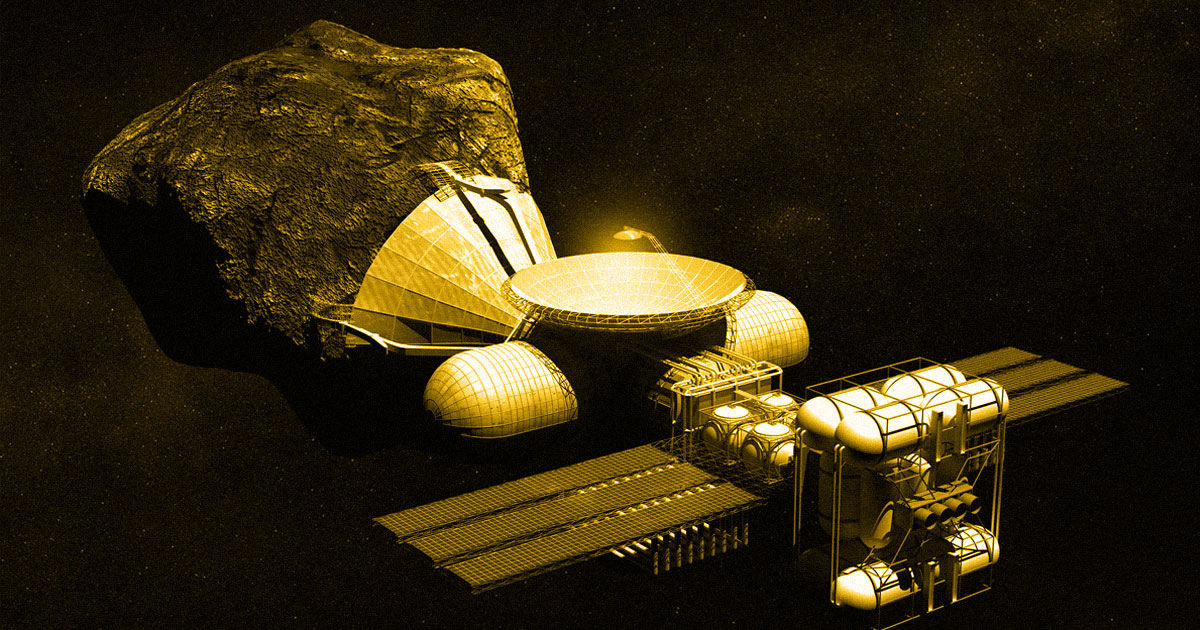Scientists and heads of technology corporations consider the withdrawal of industrial enterprises into space a reality

What if the best way to protect our planet from the influence of civilization is to leave the Earth? At least that part of the infrastructure created by man, which pollutes the environment. It is about industrial production. Leaving Earth does not mean sending plants and factories to unknown distances - it is about the exploration of asteroids and near-Earth space .
Sounds like science fiction, but over the past few decades, a lot of science fiction ideas have been implemented, including ubiquitous communications, miniature electronic devices and the study of Mars using robots. Scientists believe that if some types of industrial enterprises would move into space, this would help the Earth to cleanse a little. One of the adherents of this point of view is the ex-NASA employee Phil Metzger, who worked in the agency for about 30 years.
“The solar system makes it possible to create production facilities that are many times larger than those we now have on Earth. If we talk about the planetary scale of human activity, what is happening now, we can think about trying to start developing asteroids and planets, ”he says.
')
The problem is not only, for example, in metals, but also in energy. If computer technology is introduced at the same pace as now, then by 2040 the Earth will not be able to provide the energy needs of such an infrastructure .
Gradually, everything is moving towards the fact that mankind will more and more actively explore outer space, and sooner or later it will be possible to deploy industrial enterprises outside our planet. The development of asteroids, for example, is not at all a fairy tale - the company Planetary Resources Inc. collected tens of millions of dollars to implement such a project. So far it is unclear how quickly all this can be organized, but there is no doubt that the idea is gradually turning into practice.
In addition, many countries are interested in mining on the Moon - these are the USA, Russia, China, and India. Some are interested in helium-3 as a source of substance for the fusion reactors of the future. But on the moon and apart from that a large amount of resources. There is even water here, of course, not in liquid form, but as ice.
Not only governments of different countries, but also private business are interested in space and planets of the Solar system. So, Ilon Musk, the head of SpaceX, believes that on Mars you can establish a colony of people and produce the things necessary for the colonists right there. Jeff Bezos, head of Amazon and Blue Origin, is investing billions of dollars in space technology. According to him, in space, you need to go, first of all, for energy resources. “The fact that the Earth’s energy resources will sooner or later become exhausted is beyond doubt. This is arithmetic, this will happen, ”he said.
 Attempts to produce something in space have already been. So, in 2014, the startup Made In Space, Inc. became the first company that managed to perform 3D printing in zero gravity. Representatives of the company then said that they had completed the "first step, which would allow the production of" by request "in open space." We are talking about small “workshops” that carry out the orders of astronauts or colonists, but that's the case. NASA concluded with Made In Space, Inc. a contract to create a system that can print metal parts from 30 different materials, including titanium, aluminum, steel, thermoplastic composites.
Attempts to produce something in space have already been. So, in 2014, the startup Made In Space, Inc. became the first company that managed to perform 3D printing in zero gravity. Representatives of the company then said that they had completed the "first step, which would allow the production of" by request "in open space." We are talking about small “workshops” that carry out the orders of astronauts or colonists, but that's the case. NASA concluded with Made In Space, Inc. a contract to create a system that can print metal parts from 30 different materials, including titanium, aluminum, steel, thermoplastic composites.If you use lasers - you can turn ice into water, and then decompose it into hydrogen and oxygen, the ingredients of rocket fuel. That is, you can cook fuel directly in space.

Well, the idea of deploying power plants that convert the light of the Sun into electricity, right in orbit, appeared in the early 20th century.
Of course, the creation of objects of this scale alone, by even a very rich company, is impossible. “Creating an industrial infrastructure in outer space will require the consolidation of the efforts of many companies, as well as the ideas of talented scientists. But you need to start small, ”says Daniel De Latte from the Draper Laboratory.
Source: https://habr.com/ru/post/458966/
All Articles